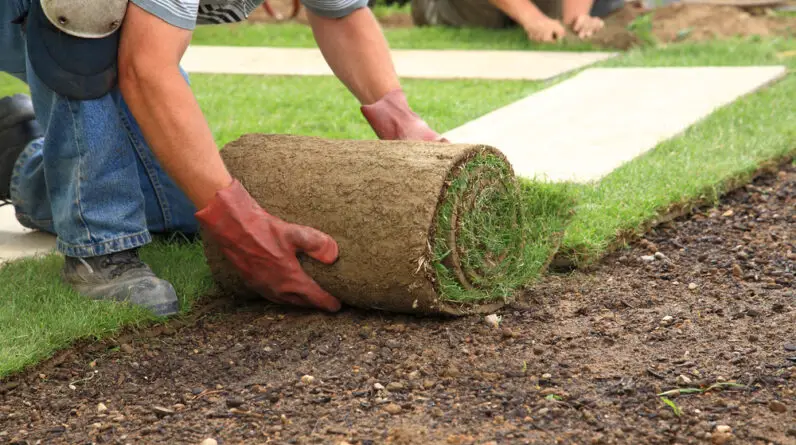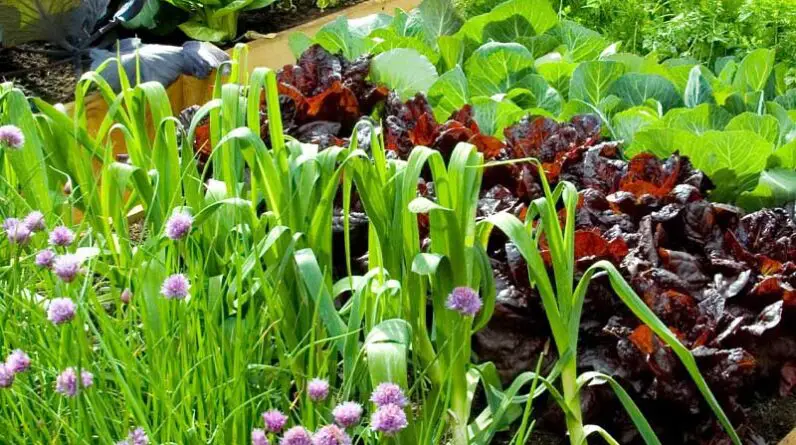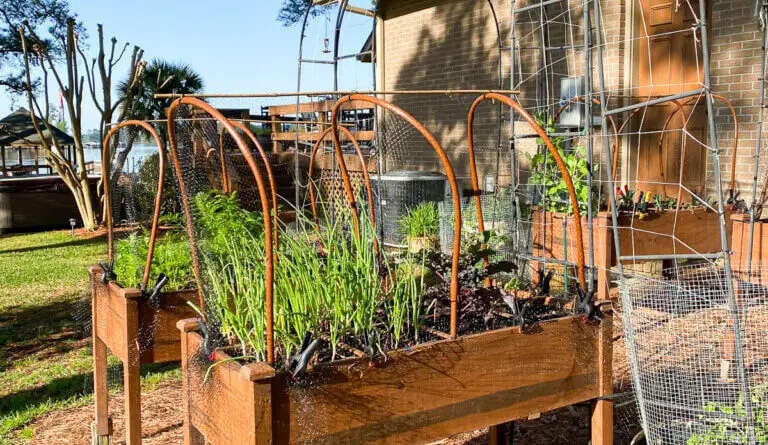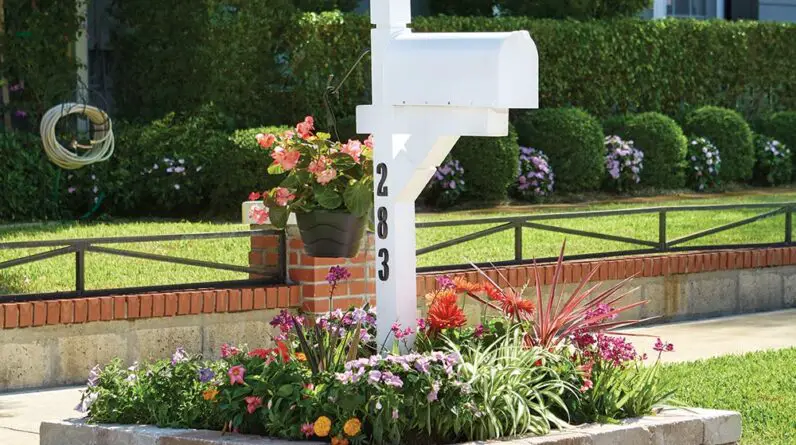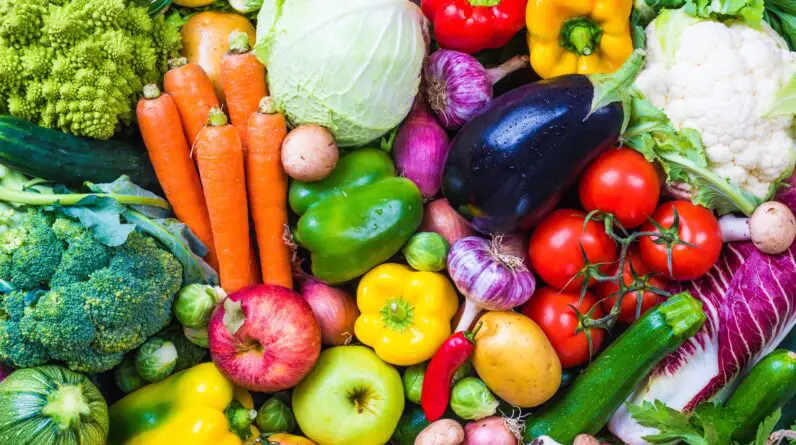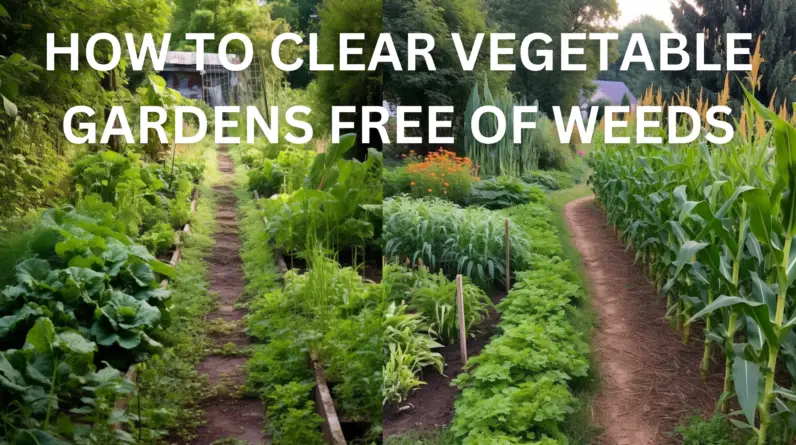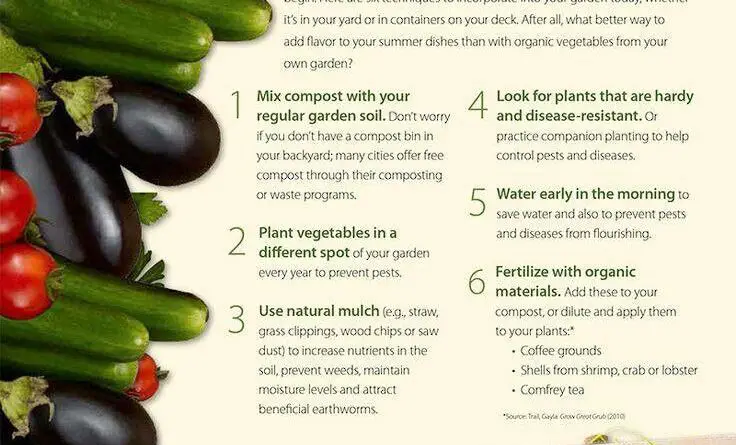
Have you ever thought about growing your own organic garden? Perhaps you’re looking for ways to reduce your environmental impact or wanting to have fresh, pesticide-free produce right at your fingertips. Well, you’re in luck! In this article, we’ll be discussing some organic gardening tips that will help you get started and achieve a bountiful, eco-friendly garden.
One important aspect of organic gardening is soil health. A thriving garden begins with nutritious soil, so make sure to enrich it with organic matter such as compost or well-rotted manure. This will provide essential nutrients for your plants and improve soil structure. Additionally, consider using natural mulch, like straw or wood chips, to retain moisture and suppress weeds.
Another tip to remember is the importance of biodiversity in your garden. Encouraging a diverse range of plant species will not only attract beneficial insects and pollinators but also help prevent common pests and diseases. Consider planting companion plants that will support each other’s growth, such as marigolds to deter pests or basil to enhance the flavor of tomatoes.
Lastly, regular observation and maintenance are key to a successful organic garden. Monitor your plants for signs of pests or diseases, and take appropriate action, such as using organic pest repellents or picking off affected leaves. Water your plants deeply and infrequently to encourage deep root growth, and practice proper weed management to prevent competition for resources.
In this article, we’ve only scratched the surface of organic gardening tips. By implementing these strategies and continuing to learn, you can establish a thriving organic garden that not only provides you with delicious, nutrient-packed produce but also promotes a more sustainable and environmentally friendly lifestyle. So, let’s get our green thumbs ready and delve further into the world of organic gardening together!
Click Here For The Best Gardening Tools On The Market!
Importance of Organic Gardening
Organic gardening is becoming increasingly popular as people recognize the importance of growing their own organic produce. Not only does organic gardening provide health benefits through the consumption of nutritious fruits and vegetables, but it also has significant environmental benefits. In this article, we will explore the various reasons why organic gardening is important and how to implement it in your own garden.
Health benefits of organic produce
One of the main reasons why organic gardening is important is because it allows you to grow and consume produce that is free from harmful chemicals and pesticides. Conventionally grown fruits and vegetables are often sprayed with synthetic pesticides that can have detrimental effects on our health when consumed.
By growing your own organic produce, you have control over what goes into your food. You can ensure that your fruits and vegetables are grown without the use of pesticides, herbicides, or synthetic fertilizers. This means that you are consuming food that is not only more nutritious but also free from harmful residues.
Organic produce is also known to be higher in essential nutrients such as vitamins, minerals, and antioxidants. This is because organic farming practices focus on building healthy and fertile soil, which in turn leads to more nutrient-dense crops.
Environmental benefits of organic gardening
Another important aspect of organic gardening is its positive impact on the environment. Conventional farming methods often result in soil erosion, water pollution, and a decrease in biodiversity. Additionally, the use of synthetic fertilizers and pesticides contributes to greenhouse gas emissions and depletes non-renewable resources.
Organic gardening, on the other hand, promotes practices that are eco-friendly and sustainable. By using compost, organic matter, and natural fertilizers, organic gardens improve soil health and increase its ability to retain water. This reduces the need for irrigation and helps prevent water pollution.
Organic gardening also encourages biodiversity by providing a habitat for beneficial insects, birds, and other wildlife. By avoiding the use of synthetic pesticides, you allow natural predators to keep pest populations in check, creating a balanced ecosystem in your garden.
Choosing a Location for your Organic Garden
Now that you understand the importance of organic gardening, it’s time to start planning your own organic garden. The first step is to choose a suitable location for your garden. Here are some factors to consider:
Sunlight requirements for different plants
Most plants require sunlight to grow and thrive. It’s important to choose a location that receives an adequate amount of sunlight throughout the day. Observe your garden space and take note of areas that are exposed to direct sunlight for at least six hours a day. This will ensure that your plants have the energy they need to photosynthesize and grow healthy.
Soil quality and composition
The quality of your soil is crucial for the success of your organic garden. Conduct a soil test to determine its pH level and nutrient content. Most plants prefer slightly acidic to neutral soil with good drainage. If your soil is too acidic or alkaline, you can make adjustments by adding organic amendments such as compost or aged manure.
Consider the composition of your soil as well. Sandy soil drains quickly but may require more frequent irrigation, while clay soil retains water but can become compacted easily. Loamy soil, which is a mixture of sand, silt, and clay, is considered ideal for most plants.
Consideration of nearby trees and buildings
Take into account any nearby trees or buildings that may cast shade on your garden. Certain plants require full sun, while others can tolerate partial shade. Plan your garden layout accordingly to maximize sunlight exposure.
Also, be aware of any overhanging branches that could potentially damage your plants during strong winds or storms. Trim any branches that pose a risk to your garden.
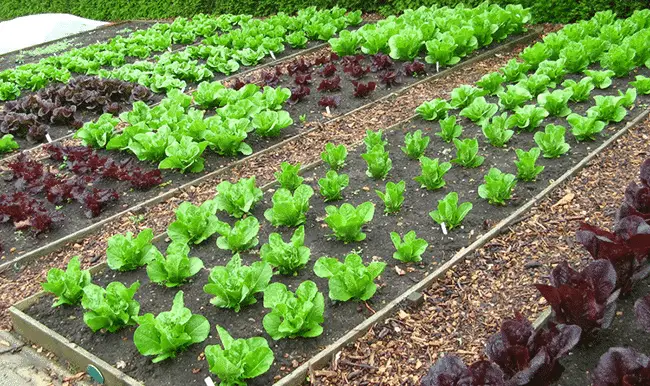
Click Here For The Best Gardening Tools On The Market!
Preparing the Soil for Organic Gardening
Once you have selected a suitable location for your organic garden, the next step is to prepare the soil. Proper soil preparation is essential for the growth and development of your plants. Here are some steps to follow:
Removing weeds and grass
Start by removing any weeds, grass, or unwanted vegetation from your garden bed. This can be done by hand-pulling or using a garden fork or shovel to loosen the roots. Be thorough in removing all weeds to prevent competition for nutrients and space.
Testing and improving soil fertility
Before planting, it’s a good idea to test your soil to determine its fertility. Soil testing kits are available at garden centers or you can send a sample to a professional soil testing laboratory. The results will indicate the pH level, nutrient deficiencies, and any amendments needed.
If your soil is lacking in nutrients, you can enrich it by adding organic amendments such as compost, aged manure, or bone meal. These organic matter sources help improve soil structure, fertility, and water-holding capacity.
Adding organic matter and compost
Incorporating organic matter into your soil is crucial for long-term soil health. Organic matter improves soil structure, enhances nutrient availability, and promotes beneficial microbial activity. It also helps retain moisture and prevents erosion.
Add a generous layer of compost or well-rotted manure to your garden bed and incorporate it into the top few inches of soil. This will provide your plants with a nutrient-rich environment to grow in.
Selecting Organic Seeds and Seedlings
Now that your soil is ready, it’s time to select the seeds and seedlings for your organic garden. Here are some tips to help you choose the best options:
Buying organic seeds from reputable sources
When purchasing seeds, always look for organic options from reputable suppliers. Organic seeds are produced without the use of synthetic fertilizers, pesticides, or genetically modified organisms. This ensures that your plants will be free from harmful chemicals from the very beginning.
Checking for certification labels
Look for certification labels on the seed packets, such as the USDA Organic seal. These labels indicate that the seeds have been produced in accordance with organic standards. This means that you can trust the seeds to be free from contaminants and of the highest quality.
Choosing disease-resistant varieties
Consider the climate and specific growing conditions in your area when selecting seeds. Look for disease-resistant varieties that are known to perform well in your region. This will increase the chances of a successful harvest and reduce the need for chemical pesticides.
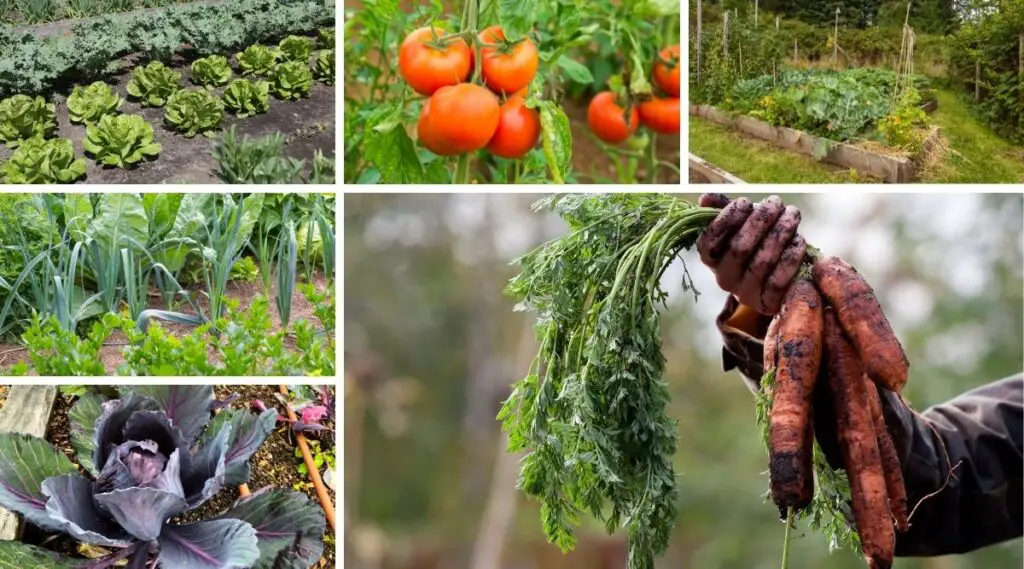
Companion Planting for Organic Gardens
To promote a healthy and thriving garden, consider implementing companion planting in your organic garden. Companion planting involves growing different plants together that benefit each other in some way. Here are some benefits and examples:
Benefits of companion planting
Companion planting offers several advantages for organic gardens. Certain plant combinations can help deter pests by masking scents or repelling insects. Some plants attract beneficial insects, such as ladybugs or bees, which help control pests naturally and aid in pollination.
Companion planting can also improve nutrient uptake and conserve space in your garden. Some plants have deep-rooted systems that help break up compacted soil, while others have shallow roots that help retain moisture and prevent erosion.
Examples of compatible plant combinations
There are many companion planting combinations to choose from, depending on the plants you want to grow. Here are a few examples:
- Planting marigolds (Tagetes) near tomatoes helps repel aphids and nematodes.
- Growing basil near tomatoes improves their flavor and repels flies and mosquitoes.
- Planting radishes in between rows of carrots helps deter carrot flies and loosens the soil for easy harvest.
Do some research and experiment with different companion planting combinations to find what works best for your garden.
Organic Pest Control Methods
Pest control is an important aspect of organic gardening. Here are some natural ways to deter pests while maintaining a healthy and balanced ecosystem:
Natural ways to deter pests
- Introduce plants that repel pests, such as garlic, onions, or chives.
- Use physical barriers like row covers or netting to protect plants from insects and birds.
- Practice crop rotation to disrupt pest life cycles and reduce the risk of infestations.
Using organic insecticides and fungicides
If pests still persist despite preventive measures, consider using organic insecticides and fungicides. These products are derived from natural sources and are less harmful to beneficial insects and the environment. Neem oil, for example, is a popular organic pesticide that effectively controls a wide range of pests.
However, it’s important to use organic pesticides sparingly and only when necessary. Always follow the instructions on the label and consider alternative methods of pest control first.
Attracting beneficial insects
Encouraging beneficial insects, such as ladybugs and lacewings, to your garden is an effective way to control pests naturally. Planting flowers that attract these insects, like daisies or yarrow, will create a habitat that supports their populations.
You can also provide shelter and food sources for beneficial insects by installing insect hotels or placing rocks and logs in your garden. By creating a welcoming environment for these natural predators, you can reduce the need for chemical pesticides.
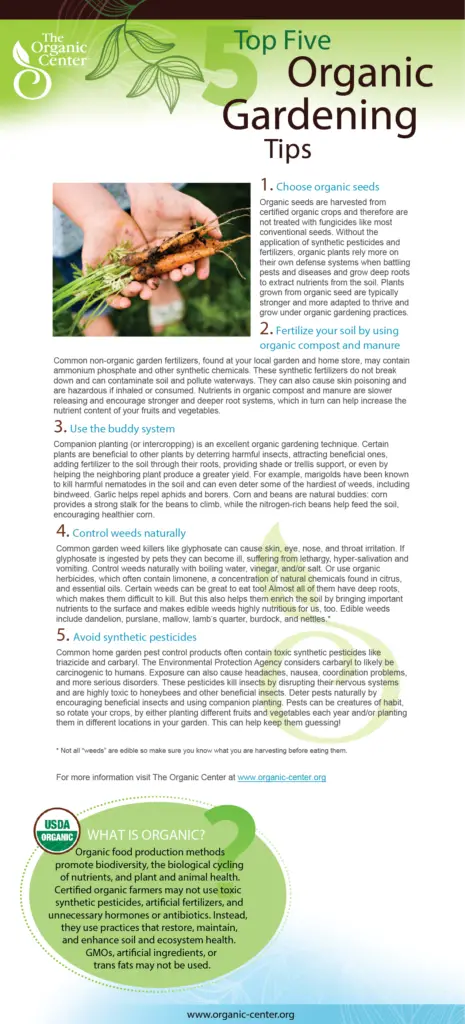
Watering and Irrigation in Organic Gardening
Proper watering and irrigation techniques are crucial for the health and productivity of your organic garden. Here are some guidelines to follow:
Proper watering techniques for different plants
Different plants have different watering needs, so it’s important to understand the water requirements of the crops you are growing. Some plants, like lettuce or tomatoes, require consistent moisture, while others, like succulents, prefer drier conditions.
Monitor the soil moisture regularly by sticking your finger into the soil. If it feels dry one to two inches below the surface, it’s time to water. Avoid overwatering, as it can lead to root rot and other fungal diseases.
Installing efficient irrigation systems
Consider installing efficient irrigation systems, such as drip irrigation or soaker hoses, in your organic garden. These systems deliver water directly to the roots of plants, minimizing water loss through evaporation. They also help prevent the spread of fungal diseases by keeping the foliage dry.
Mulching your garden beds can also help conserve moisture by reducing evaporation. Apply a layer of organic mulch, such as straw or wood chips, around your plants to help retain moisture and regulate soil temperature.
Conserving water in the garden
Water conservation is a critical aspect of organic gardening. Here are some practices to help minimize water usage:
- Collect and store rainwater in barrels or containers for later use.
- Water your garden in the morning or evening to reduce evaporation.
- Group plants with similar water needs together to avoid overwatering.
- Use compost and organic matter to improve soil’s water-holding capacity.
By implementing these water-saving strategies, you can help conserve this precious resource and reduce your environmental impact.
Mulching and Weeding in Organic Gardens
Mulching and proper weed control are essential for maintaining a healthy and productive organic garden. Here are some tips to help you get started:
Benefits of mulching
Mulching offers several advantages for organic gardens. It helps suppress weed growth by blocking sunlight and preventing weed seeds from germinating. Mulch also helps retain soil moisture by reducing evaporation, which is especially beneficial during hot summer months.
In addition, organic mulch breaks down over time, enriching the soil with nutrients and improving its structure. This leads to healthier plants with stronger root systems and increased resistance to pests and diseases.
Choosing the right mulch materials
There are various mulch materials to choose from, including straw, wood chips, leaves, or grass clippings. When selecting a mulch, consider factors such as availability, cost, and suitability for your particular plants.
Avoid using mulch that contains chemicals or synthetic materials, as these can introduce contaminants into your garden. Organic mulch made from natural materials is a safer and more sustainable choice for your organic garden.
Effective methods for weed control
Weeds compete with your plants for water, nutrients, and sunlight. It’s important to stay on top of weed control to prevent them from taking over your garden. Here are some effective methods:
- Hand-pulling: Regularly inspect your garden for weeds and remove them by hand. Be sure to remove the entire root to prevent regrowth.
- Mulching: Apply a thick layer of organic mulch around your plants to suppress weed growth.
- Smothering: Use a weed barrier fabric or cardboard to cover bare soil areas and prevent weeds from sprouting.
- Organic herbicides: In extreme cases, organic herbicides derived from natural ingredients can be used to control persistent weeds.
By consistently employing these weed control methods, you can keep your organic garden weed-free and reduce competition for resources.
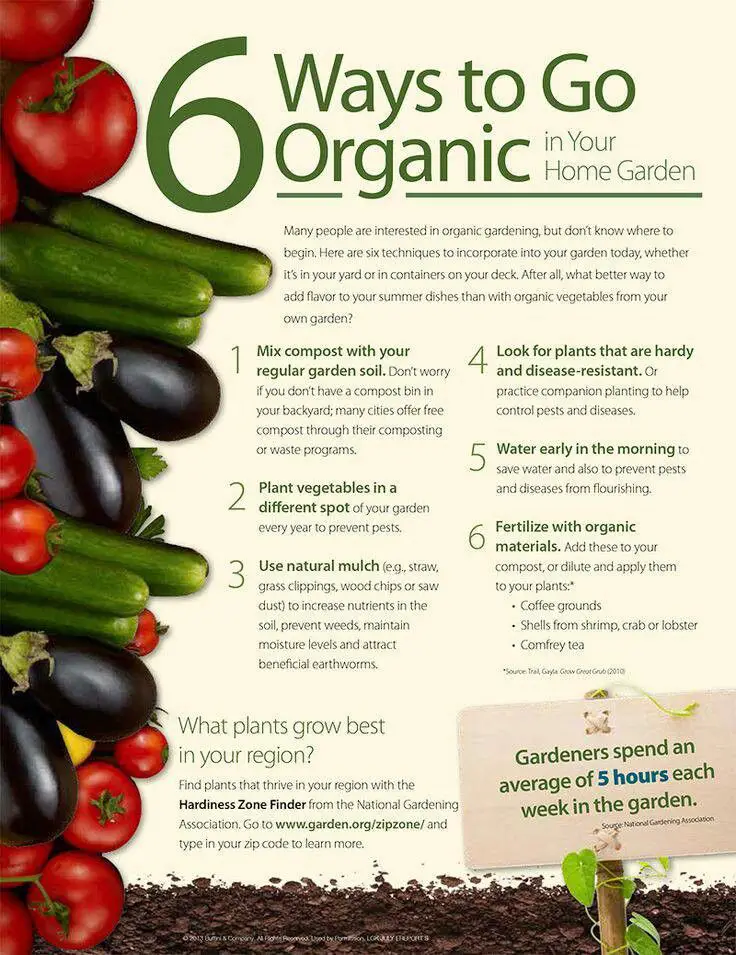
Harvesting and Storing Organic Produce
The ultimate reward of organic gardening is the ability to harvest and enjoy your own fresh and nutritious produce. Here are some tips for harvesting and storing your organic crops:
Knowing when to harvest different crops
Each crop has its own specific harvesting time. Research and understand the ideal time to pick your fruits and vegetables. For example, tomatoes are best picked when they are fully ripe and have reached their appropriate color and firmness.
Harvest leafy greens, such as lettuce or spinach, in the early morning when they are still crisp and cool. Root vegetables, like carrots or beets, can be gently pulled from the soil when they have reached the desired size.
Proper handling and storage techniques
Handle your freshly harvested produce with care to avoid bruising or damage. Use sharp gardening shears or a knife to cut vegetables from the plant, leaving a short stem attached.
After harvesting, remove any excess soil or debris and gently wash the vegetables. It’s important to dry them thoroughly before storing to prevent mold or rot. Use paper towels or a clean cloth to pat them dry.
Preserving the freshness and flavor of organic produce
To maintain the freshness and flavor of your organic produce, it’s important to store them properly. Here are some guidelines to follow:
- Store leafy greens in a perforated plastic bag in the refrigerator, or place them in a container with a damp paper towel to keep them crisp.
- Root vegetables can be stored in a cool, dark place such as a basement or a root cellar, where the temperature and humidity are controlled.
- Fruits, such as apples or berries, should be stored in a cool place away from direct sunlight to prevent them from ripening too quickly.
By following these storage techniques, you can enjoy the full flavor and nutritional benefits of your organic harvest for longer periods.
Conclusion
In conclusion, organic gardening is not only beneficial for your health but also for the environment. By growing your own organic produce, you can ensure that you are consuming food that is free from harmful chemicals and is nutritionally superior. Organic gardening also promotes sustainable farming practices and helps protect the environment from pollution and degradation.
By following the tips outlined in this article, you can successfully implement organic gardening in your own backyard. Remember that organic gardening is a continuous learning experience, and experimentation is key to achieving better results. Embrace the rewards of organic gardening and enjoy the beauty and abundance that it brings to your life. Happy gardening!


